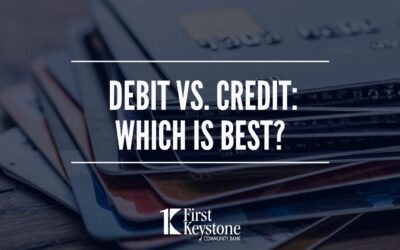Living in a post-COVID world has initiated many adaptions to how we live, including how we bank. The availability of digital banking has opened the door to consumers who had limited physical access to financial institutions but soon learned that online and mobile banking can provide fast, secure, 24/7 access to financial statements, often from the comfort and security of their own home.
Making the transition
Online and mobile banking allow you to perform almost every task that you can do in a branch with just a few clicks from a computer or smartphone. While some consumers may be hesitant about changing how they bank, the variety of features and ease of use provide strong persuasion to use digital banking. In addition, the start-up process to enroll in both online and mobile banking is quick and easy.
Gaining instant access
Digital banking provides many of the same features of in-person banking and allows you to view your activities from anywhere. To assist with monitoring your spending activity, simple tasks such as checking your account balances and pending transactions can help with day-to-day banking. More importantly, transactions are completed in real time and by setting up alerts to notify you on all account activity, you’ll know if there are suspicious transactions on your account almost immediately.
Depositing checks and transferring funds
Banking apps are user-friendly and, in most cases, do much of the work for you. If most of your bank visits are to deposit checks, mobile banking can be a game-changer. Depositing checks with your mobile banking app is a fast, easy, and secure alternative. The process typically involves endorsing the check, noting that it’s for mobile deposit (your bank will specify the correct verbiage), snapping a photo of both sides of the check, and waiting for the deposit to be processed. Make sure to consult your bank for any limitations on their mobile deposits and keep the physical check until your deposit is verified.
Transferring funds between accounts is just as easy and can be performed with just a few clicks. This one function can help prevent overdrafts and extra fees.
Protecting your information
Most digital banking utilizes high level security techniques such as encryption and multi-factor authentication, all designed to keep your information safe and secure. Additional features like a separate PIN or fingerprint sensor add an extra layer of security before you even log in. Other safety tips include:
- Turn on your account activity alerts to keep you informed of all your account activity.
- Use strong passwords that are never duplicated.
- Set auto-lock on your phone that requires password protection after a certain amount of time. This provides extra security if you misplace your phone.
- Two-factor authentication texts you a code that must be typed into the device before it can start.
- Use cellular data when banking in a public place.
Online and mobile banking also offer personal finance tools to help budget and track your finances, plus many more additional features like paying bills, locking or unlocking debit cards, transferring and sending money.
For more information on digital banking, call First Keystone Community Bank and 570-752-3671, or visit fkc.bank/services.




